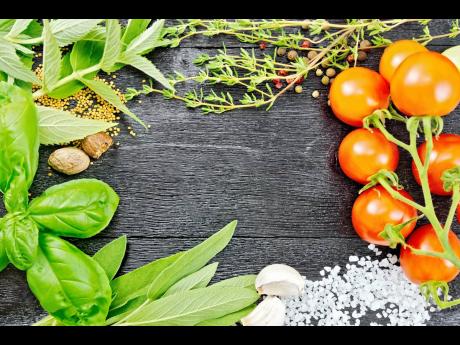Shake the salt habit
Salt, also known as sodium chloride, is about 40 per cent sodium and 60 per cent chloride. It flavours food and is used as a binder and stabiliser. It is also a food preservative, as bacteria cannot thrive in the presence of a high amount of salt. The human body requires a small amount of sodium to conduct nerve impulses, contract and relax muscles, and maintain the proper balance of water and minerals.
It is estimated that we need about 500mg of sodium daily for these vital functions, but too much sodium in the diet can lead to high blood pressure, heart disease, and stroke. It can also cause calcium losses, some of which may be pulled from bone. Most people consume at least 1.5 teaspoons of salt per day, or about 3,400mg of sodium, which contains far more than our bodies need, and is not good for your heart.
It also raises the risk of heart disease and hypertension, or high blood pressure. It is best to keep your sodium intake at or below 2,300mg daily, as per the 2020-2025 Dietary Guidelines for Americans. The American Heart Association recommends ideally going even lower and capping your intake at 1,500mg.
According to Asha-Gaye Thompson, clinical dietitian, if you are sprinkling salt on everything, from mashed potatoes and steak to your morning omelette or happy-hour cocktail rim, it may be obvious that you might be taking in excess sodium. However, it is also easy to increase your salt intake if you add salt to your meals, Thompson said.
“If you are regularly dining out, eating canned or packaged foods, like soup, canned vegetables, canned beans and frozen meals or drinking sports drinks and other beverages that have electrolytes added to them, you could be consuming way more sodium than is best for your health. In fact, you could be getting a full day’s worth of sodium from packaged foods without ever picking up a salt shaker,” she added.
SIGNS OF HIGH SALT INTAKE
It can be hard to figure out how much you are eating based on numbers alone, and who really wants to track every bite and salt shaker? However, if you find that you are, work on cutting back. This means eating more fresh foods, ditching the salt shaker, staying well-hydrated and limiting eating out.
“Sodium attracts water, and too much sodium in our diet causes our body to draw more water into our blood. This increases the blood volume, which raises blood pressure. Overtime, this may result in high blood pressure. If left untreated, blood vessels can be damage, leading to heart disease, stroke, blindness or kidney failure,” Thompson said.
Signs your salt intake is too high include bloating, increased thirst, high blood pressure and poor sleep quality. Recent research shows that higher levels of sodium will not necessarily cause people to be thirstier. But despite that, some people cannot help but increase their fluid intake after eating salty foods.
Also, eating too much sodium, especially in the evening, can affect your sleep pattern. A spike in blood pressure and sudden urges to get a drink or urinate can interrupt your sleep.
Sodium is not generally a nutrient that you need to look for; it finds you. Almost any unprocessed food, like fruits, vegetables, whole grains, nuts, meats, and dairy foods, is low in sodium. Most of the salt in our diets comes from commercially prepared foods, not from salt added to cooking at home or even from salt added at the table before eating.
TRACK YOUR FOOD
According to The Centers for Disease Control and Prevention, the top ten sources of sodium in our diets include breads or rolls; pizza; sandwiches; cold cuts or cured meats; soups; burritos, tacos; savoury snacks (chips, popcorn, pretzels, crackers); chicken; cheese; eggs, omelettes.
“The most efficient way to monitor how much salt you are consuming is to track your food. Many people do not record their food because they believe that it is a substantial time commitment, but studies have shown that it only takes about 15 minutes each day. If you are not interested in using a mobile app, you can also keep a food journal to monitor your salt intake,” Thompson said.
When grocery shopping, it I s essential to read the food labels of products you are planning to buy and compare their sodium levels to similar products. Many products nowadays have low-sodium options; however, their labels may be written in a few different ways. Usually, if salt is one of the top ingredients in a product, then it is likely too high in sodium. It is also crucial to check the serving size on the nutrition labels, as some sodium levels may appear lower than they really are.
Another helpful way to ensure that you’re keeping your salt intake below the daily recommended value is to limit your consumption of processed, canned, and frozen foods, such as canned soups, deli meats, canned vegetables, frozen dinners, cured foods and fast foods.
“You can choose unprocessed foods and make meals with fresh ingredients. It can also help to use alternatives to salt when cooking, such as spices like basil, cilantro, ginger, curry, sage, thyme, or rosemary,” Thompson said.
SOURCE: Harvard School of Public Health; Health Talk Sundays



